NJ fires both protect, endanger these Pinelands neighborhoods
MANCHESTER — Along a stretch of quiet pine forest on the edge of the Roosevelt City neighborhood, a crackling fire burned Wednesday afternoon. Firefighters ignited piles of dead pine needles and old branches on the forest floor as white smoke billowed into the blue sky.
This annual ritual – setting small, carefully controlled fires in specific areas of the Pine Barrens – helps to reduce forest debris that under the right conditions could fuel a larger, dangerous inferno.
The official start of New Jersey's forest fire season on Friday marks a time of year when conditions in this part of the state are ripe for wildfires. Strong spring winds, low humidity and forest underbrush dried by strengthening sunlight come together to create conditions perfect for flames to flourish here.
"The reality is that New Jersey is ground zero for some of the worst impacts of climate change," said Shawn LaTourette, commissioner of the New Jersey Department of Environmental Protection, which includes the state Forest Fire Service.
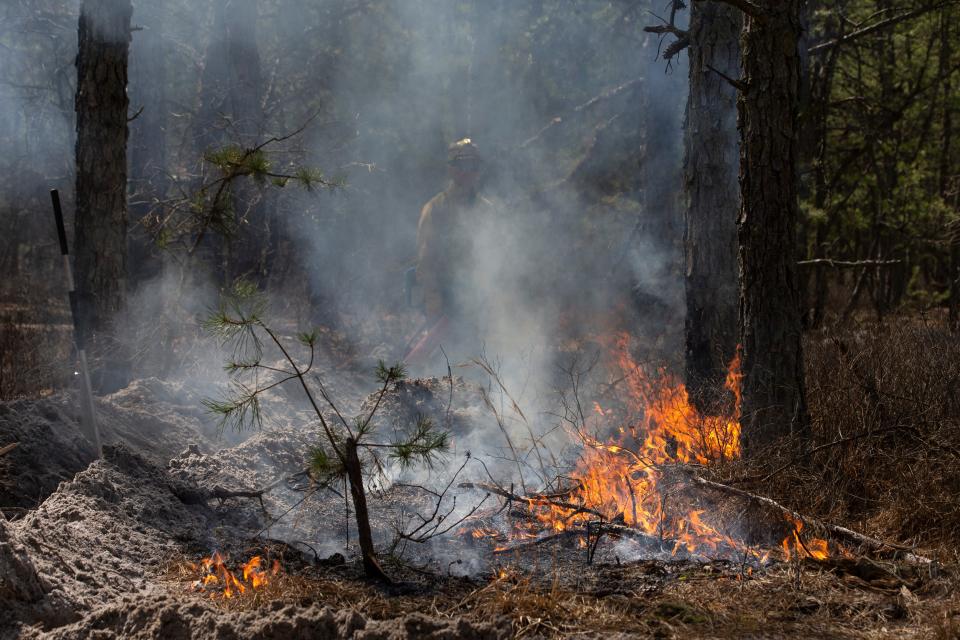
"Those impacts include a lengthening wildfire season," LaTourette said at the edge of thick pine forest, where firefighters gathered to burn underbrush. "Sometimes, I think we should start thinking of it as wildfire year."
The last time a major blaze affected this part of Manchester was in 1995, when the Greenwood Fire scorched 17,000 acres of Pinelands, said Joseph Battersby, a division fire warden with the state Forest Fire Service. Thirteen years later, in 2018, state and local officials started thinning out the woods in this area of the township as the risk of wildfire grew with the ever-thickening trees and shrubs, he said.
Last year, a major blaze struck Manchester again, but this time to the north of Roosevelt City. That fire, known as the Jimmy's Waterhole fire, torched nearly 4,000 acres through the Beckerville neighborhood of Manchester and stretched across the southeastern side of Joint Base McGuire-Dix-Lakehurst. Eventually, firefighters stopped the wall of flames near the western edge of Lakehurst Borough.
The Jimmy's Waterhole fire was one of 14 major wildfires in New Jersey last year, according to state officials. In total, 18,000 acres of New Jersey's woodlands were consumed by nearly 1,200 separate fires, LaTourette said.
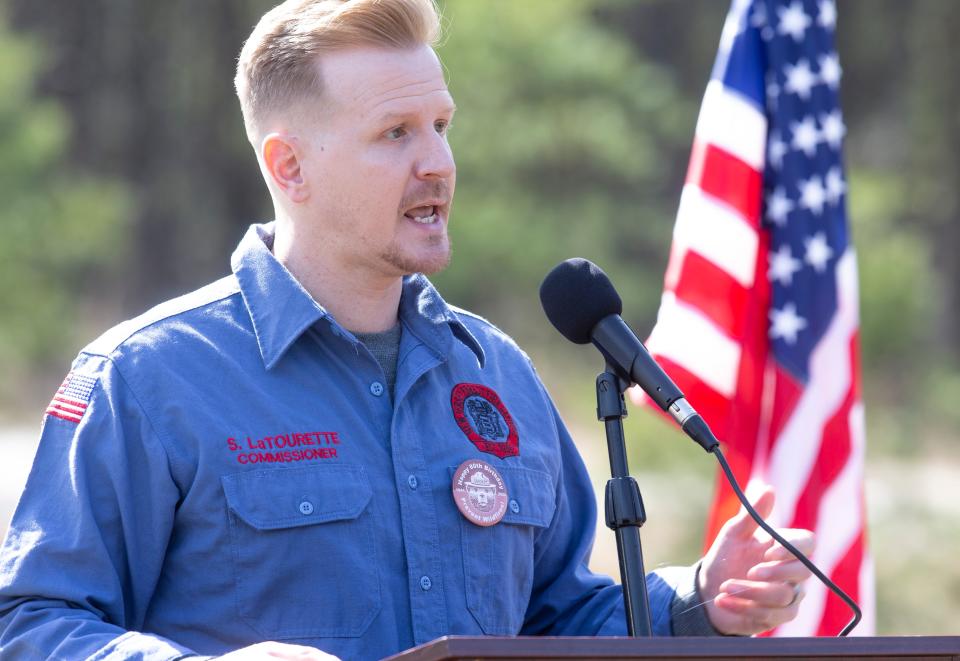
"This ecosystem is dependent upon fire to reproduce," said Tim Regan, a cooperative fire specialist for the U.S. Department of Agriculture's Forest Service. The federal agency helps to fund protective programs like fire breaks around at-risk communities like Roosevelt City.
The pitch pines dominant in these forests need fire to reduce competition from trees like oaks, while the pines' thick bark protects them from flames and high temperatures. These trees have also developed some pine cones that open and spread seeds after being heated by fire, according to the Pinelands Preservation Alliance.
In the 1800s, this area of New Jersey would experience wildfires that stretched from the Delaware River to Barnegat Bay, Regan said.
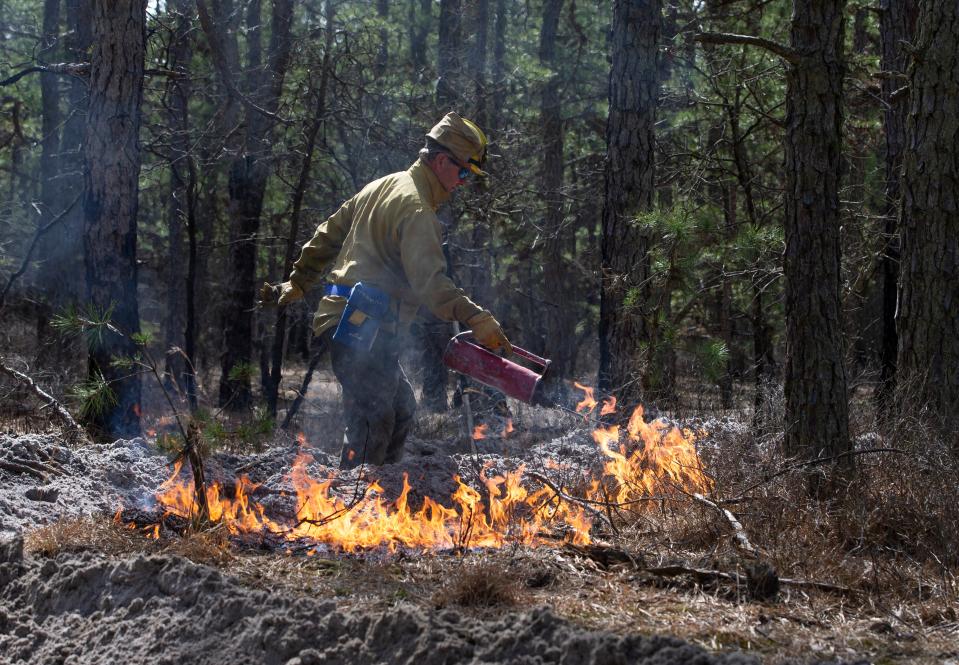
"The Pines present a challenge that really only exists here, in parts of Massachusetts, and some islands in lower New York state as well," he said. "We deal with a very southern type of ecosystem here that's out of place in New Jersey, and fire has always been a big part (of the landscape).
"The Native Americans just moved out of the way and waited, and used the fertile soil (left in the wake of the fires)," Regan said. "We don't enjoy that today, we've built this (area) up to a point where we have hundreds of thousands of people living in the wildland-urban interface."
That wildland-urban interface is a term used by fire experts to describe communities built along or within fire-prone areas, including forests and grasslands.
To reduce that fire risk in these areas, firefighters choose days in the late winter with little to no wind before they ignite the leaf and pine needle litter. They carve wide roads into the sandy forest floor, roads devoid of burnable material. The roads also provide firefighter trucks access into the woods to extinguish brush fires that may arise from a discarded cigarette, a spark from a car engine, or an unattended campfire.
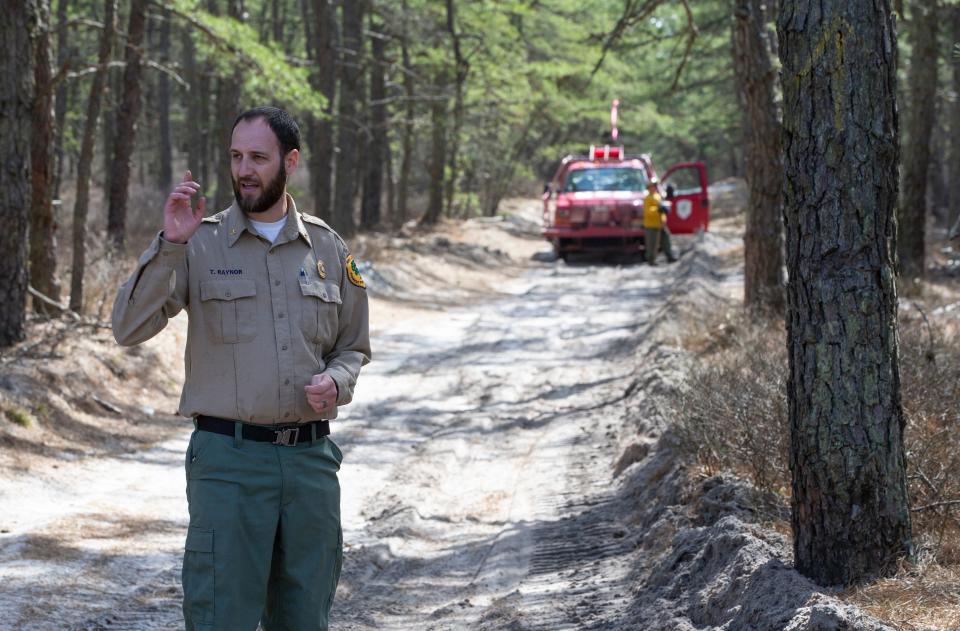
About 60% of the land in Ocean County is preserved as parks, forests and open space, said county Commissioner Virginia "Ginny" Haines. Yet much of this protected land lies around some of the county's most vulnerable residents – thousands of people living in age-restricted 55 and older communities spread across the western edges of Manchester, Berkeley, Barnegat and Stafford, among other towns.
"The firemen who put out that (Jimmy's Waterhole) fire last year, they reminded us that the senior citizens who are in walkers or wheelchairs, they cannot just jump in their car like younger people and leave their home," said John Cecil, assistant commissioner for state parks, forests and historic sites. "They have to be evacuated. And that's a time-consuming endeavor, and there's certainly a threat of the loss of life with our many senior communities in the Whiting and Roosevelt (City) area."
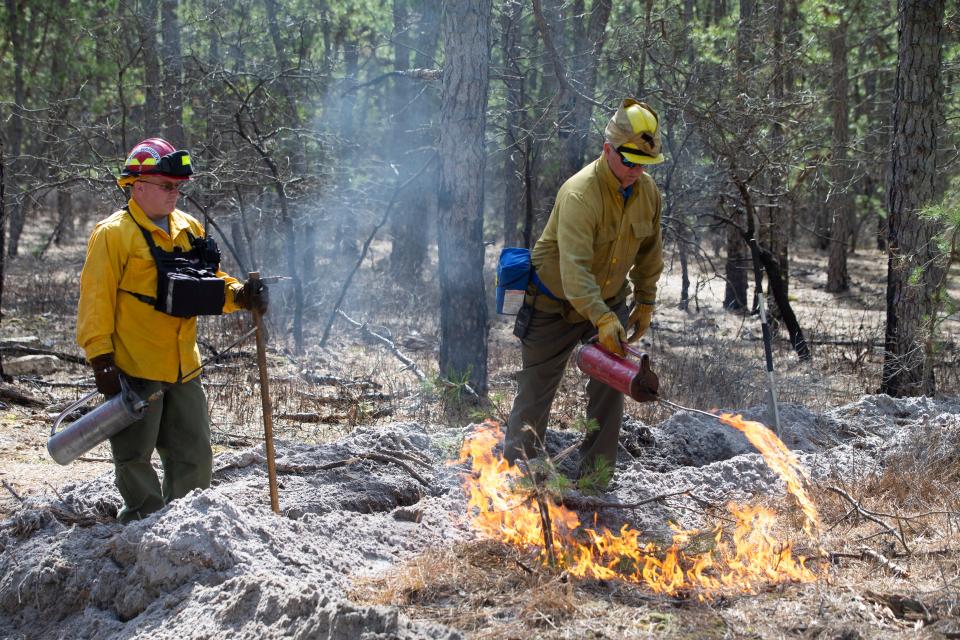
Yet the wildfire risk is not just focused in these rural neighborhoods deep within the Pinelands. As sea level rise and saltwater intrusion are killing stretches of forests along the Jersey Shore, and as periods of drought become more common along with periods of intense rains, the wildfire threat is moving closer to the coast, LaTourette said.
"There's nowhere to retreat to," the state commissioner said. "We've got to make ourselves more resilient. We've got to adapt in our daily lives.
"I don't see our climate imperative as some doomsday scenario, just that it could become one if we're not attentive," LaTourette said. "The real reforms make us more attentive. Build things stronger. Let them stand the test of time and a changing climate."
Amanda Oglesby is an Ocean County native who covers education and the environment. She has worked for the Press for more than a decade. Reach her at @OglesbyAPP, aoglesby@gannettnj.com or 732-557-5701.
This article originally appeared on Asbury Park Press: NJ Forest Service uses fire to fight fire as dangerous season begins

